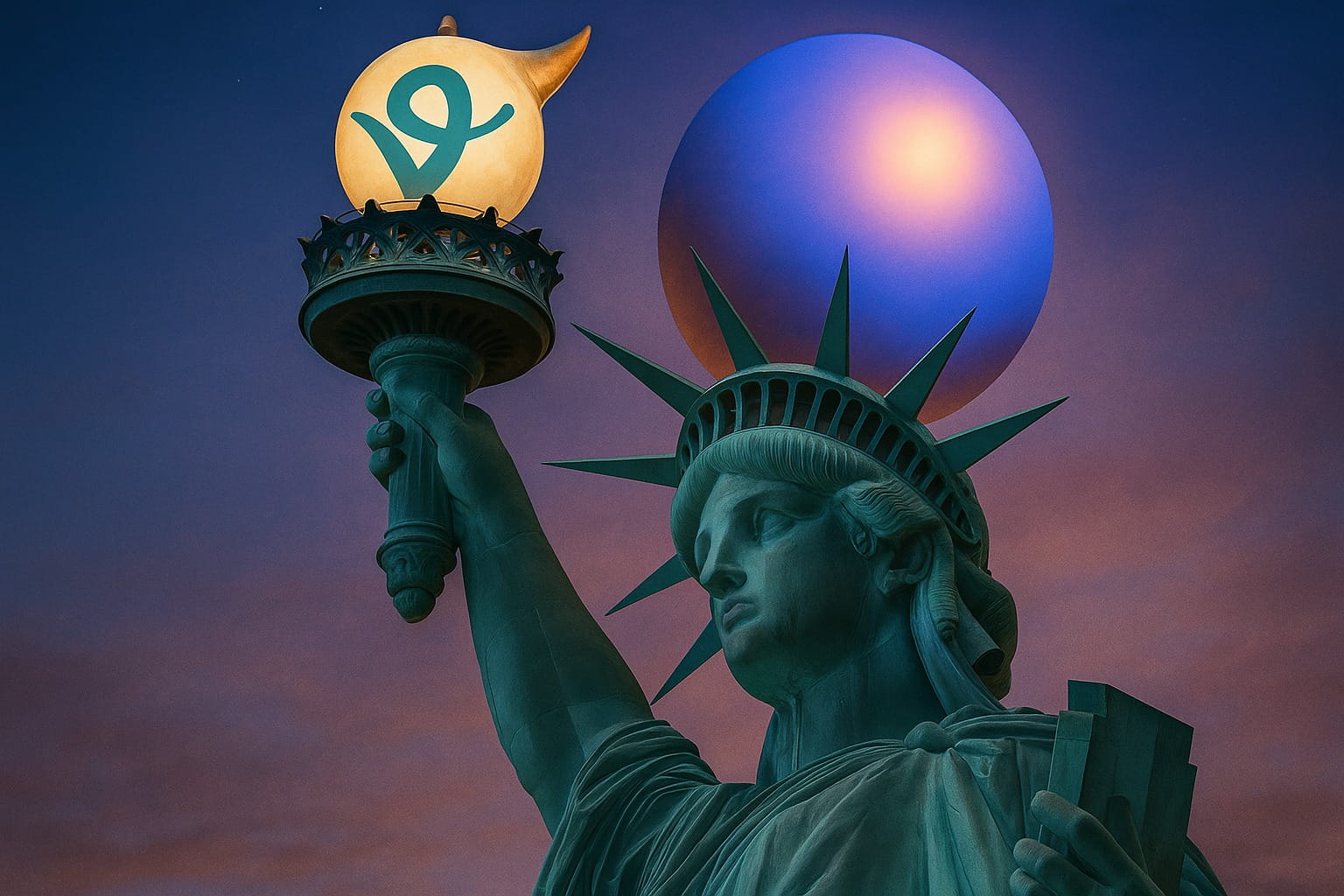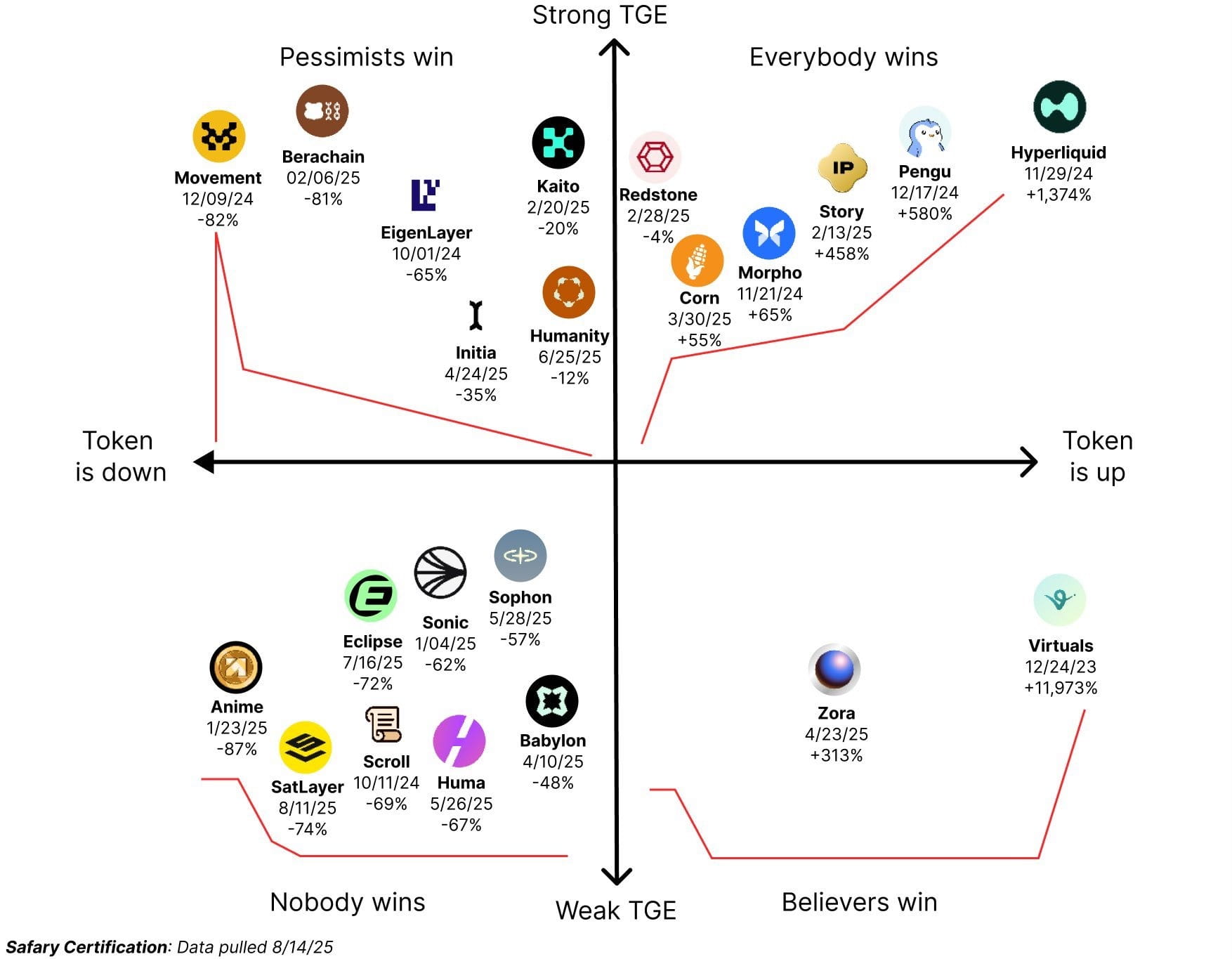
Looking back at the price performance of Berachain ($BERA), Movement ($MOVE), and Hyperliquid ($HYPE), we find that 'Token Generation Events (TGE)' can either be the starting point for project value discovery or the beginning of a bubble burst. How to distinguish between strong and weak TGEs, grasp the timing of issuance, and understand market liquidity has become a necessary course for the new generation of investors.
From high-heat TGE to product cold start: the craze does not guarantee success
According to the analysis by Justin Vogel, co-founder of Safary, the TGE data from the past 18 months reveals a harsh reality: 'Almost all high-heat and highly publicized TGEs have collapsed within 48 hours of launch. The new strategy is to wait for adoption before TGE or to issue on a small scale and accumulate value over time.'

He categorizes TGE into two types:
Strong TGE: Such as Berachain ($BERA) and Movement ($MOVE), with community enthusiasm and highly anticipated exchanges, however, prices quickly peaked.
Weak TGE: Such as Zora ($ZORA) and Virtuals ($VIRTUL), quietly issued but stabilized and rose as products landed and communities grew.
This trend indicates that the market is shifting from speculation to assessing strength:
The past TGE model rewarded pessimists and punished believers; but if future incentive mechanisms can return to real adoption and fundamentals, believers will ultimately win.
Building distribution channels is more crucial than listing on exchanges
jkey further pointed out that most teams still view centralized exchanges (CEX) as the only distribution channel, which is the fundamental problem of 'weak TGE'. In contrast, successful projects often create their own user pathways and community distribution, making exchange listings an 'added value' rather than a lifeline:
Successful projects that have long been committed to building a real user base do not need to seek listings, because CEX will actively come to them.
(CZ responds to the Binance listing fee controversy: If you don't want to pay, then don't pay; good projects don't need to seek listing.)
Taking Virtuals as an example: They completed their token issuance a year before the AI craze, relying on stable products and community diffusion, later riding the AI agent trend to become long-term winners.
This rhythm of 'having a product before issuing tokens' allows projects to maintain vitality even after the market cools down, rather than being a brief price firework.
The liquidity cycle is the true key to TGE success or failure
In this regard, senior researcher Haotian approached it from the perspective of market cycles and shared his observations: 'The performance of TGE often depends on the current market liquidity, rather than the project's fundamentals.'
He provided examples:
By the end of 2023: Liquidity is abundant, the performance of NFT community tokens like $Pengu is even more impressive than most projects at that time.
From April to May 2024: Liquidity is depleted, projects like Babylon ($BABY) and Huma Finance ($HUMA) with technical narratives and VC endorsements also find it hard to escape the fate of price weakness.
When market funds cannot sustain, even high-quality projects may be mistakenly killed; conversely, during a flood of funds, projects without fundamentals can also experience short-term surges. This is precisely why the opening is the peak.
Value in the downturn: Zora and Virtual's reverse victory
However, Haotian pointed out that in the wrong TGE time window, it is easier to give birth to long-term winners.
Zora: Issued during a quiet market, breaking through with the narrative of token launch platforms and creator tokenization ecology.
Virtual: Launched during a low liquidity phase, relying on practical scenarios of AI agents and strong community, causing a sensation at the beginning of the year.
He emphasized that liquidity bonuses without fundamental support will only accelerate death; strong fundamentals during unpopular periods are the golden opportunity for value discovery.
(Breaking down the Virtuals point system: retail-friendly, encouraging long-term holding, lowering issuance valuation to create upward space)
Insights for investors: From research, selection to entry
At the end of the article, Haotian also provided a clear trading context: 'For most retail investors, it is essential to understand the importance of the TGE time window and adopt differentiated strategies.'
In times of good market liquidity, be cautious about chasing strong TGE projects and enter and exit quickly; in quiet markets, focus on finding undervalued quality projects and holding them long-term. In this way, one could become the final winner.
Now, TGE is no longer a stage for traffic and speculation, but a starting point for validating product value. Whether a strong community can be built from practical products has become a key issue for projects.
This article discusses how TGE timing affects project development: identifying strong and weak TGE to find investment opportunities in value tokens first appeared in Blockchain News ABMedia.



